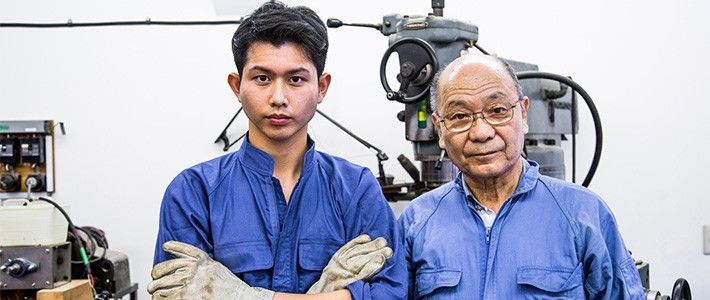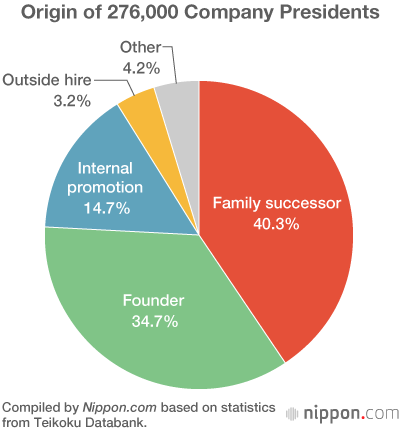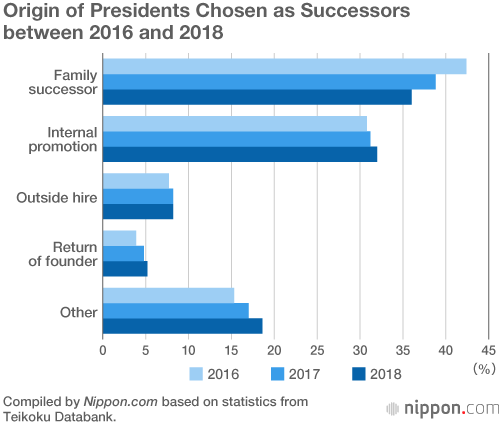
Two in Three Japanese Companies Lack a Successor
Economy- English
- 日本語
- 简体字
- 繁體字
- Français
- Español
- العربية
- Русский
A 2018 study found that 66.4% of Japanese businesses lack a successor to take over from the current owner. Research firm Teikoku Databank looked at 276,000 applicable companies, starting from 2016.
It learned that 75% of businesses with five or fewer employees lack a successor, as do 81.3% of businesses with total sales of under ¥50 million. In other words, the study reveals that the smaller the firm, the more likely it is struggling to find someone to take over the business.
Percentage of Businesses that Lack a Successor by Number of Employees
| 5 or fewer | 75.0 |
| 6 to 20 | 68.2 |
| 21 to 50 | 62.6 |
| 51 to 100 | 58.2 |
| Over 100 | 48.4 |
Compiled by Nippon.com based on statistics from Teikoku Databank.
Percentage of Businesses that Lack a Successor by Total Sales
| Under ¥50 million | 81.4 |
| ¥50–100 million | 76.0 |
| ¥100 million to ¥1 billion | 68.9 |
| ¥1–5 billion | 59.3 |
| ¥5–10 billion | 49.5 |
| ¥10–100 billion | 40.4 |
| Over ¥100 billion | 25.8 |
Compiled by Nippon.com based on statistics from Teikoku Databank.
The study also looked at how the presidents of the 276,000 companies rose to that position. In the case of around 110,000 of the companies, or 40.3% of the total, the president was a successor chosen from within the same family as the former president. The next most common case, among 34.7% of the companies, was a president who was the company founder, followed by internal promotions for 14.7% of the companies, outside hires in 3.2% of the cases, and other routes in 4.2%.

For the roughly 35,000 companies that had decided on a successor since 2016, the most common situation was a family member taking over the firm, at 36%, but there has been a gradual decline in the percentage of such cases over the years.
In contrast, there has been a slight increase in the number of company presidents appointed through internal promotions, as outside hires, or for other reasons such as someone being transferred from another company or as a result of a merger or split. Particularly for presidents in their fifties or sixties, there are many cases other than a family successor, which seems to reflect the fact that they were chosen on the basis of their management or industry experience.

In 2018, 5.3% of companies were still represented by their founder, but many of those company leaders are now in their seventies or eighties. In some cases, they returned to their position—after having stepped down to be chairman without representative rights or advisors—due to such reasons as a lack of company executives or the need to foster the next leader.
Among the companies in the study, 316 reported (as of October 2018) that they had to go bankrupt in 2018 because of the impossibility to continue business without a successor. By the end of this year, the total number of bankruptcies for that reason may surpass the 341 bankruptcies in 2017.
(Translated from Japanese. Banner photo © Pixta.)